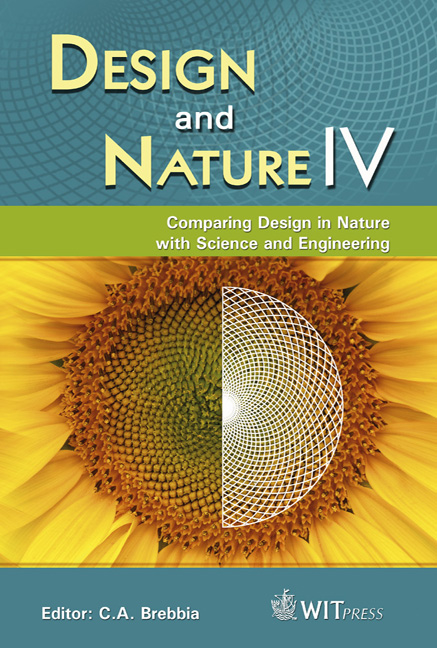Descartes, Plateau, And Sea Urchins
Price
Free (open access)
Transaction
Volume
114
Pages
9
Page Range
97 - 105
Published
2008
Size
1228 kb
Paper DOI
10.2495/DN080111
Copyright
WIT Press
Author(s)
M. Abou Chakra & J. R. Stone
Abstract
Sea urchin skeletons (tests) exhibit pentamerous symmetry, a pattern that emerges from the beautiful and intricate arrangements among the plates of which they are composed. Plate patterns and test shapes have proven difficult to explain and describe solely on the basis of any one process. Using theoretical morphology, the discipline that involves using mathematical modelling and computer simulation to describe growth and form, we introduce a new computational model that utilises the manner with which soap bubbles interact in close-packing formation to emulate plate addition, shift, gapping and growth. The computational model is governed by close-packing configuration (Descartes circle theorem) and soap bubble interactions (Plateau’s Laws). Through this analogy, our computational model can be used to describe the evolutionary morphological changes observed in sea urchin skeletons. Keywords: skeleton, soap bubbles, growth, computational model, echinoid test. 1 Introduction D’Arcy Thompson’s On Growth and Form illustrates how physical principles can be employed to explain patterns observed in nature, including basaltic columns, turtle shells, insect wings, sea urchin skeletons and the infamous honeycomb cells, fig. 1 [1]. Thompson conceptualised the use of soap bubbles to model several biological patterns that occur in nature. Thompson considered physical forces operating in living systems, a subject he found lacking in biological research [1]. He showed that the hexagonal patterns in basaltic columns and honeycombs can be explained by considering the surface tension associated with the dynamics of a fluid [1]. Basaltic columns develop via a molten lava state; the hive wax film is added as a viscous fluid [1].
Keywords
skeleton, soap bubbles, growth, computational model, echinoid test.





